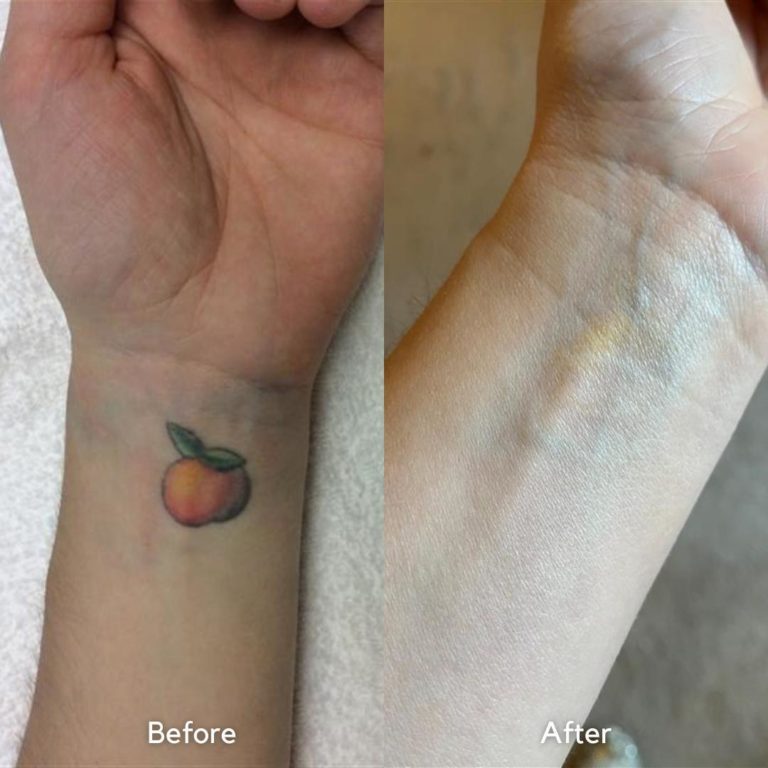Removing a tattoo is a process that many people consider for various reasons, whether it's due to personal preference, career changes, or simply wanting to start fresh. If you're contemplating laser tattoo removal, it's essential to understand how long the process takes and what factors influence the timeline. This article will delve into the details so you can make an informed decision.
While tattoos are often seen as permanent body art, advancements in technology have made tattoo removal more accessible and effective. Laser tattoo removal has become the gold standard for eliminating unwanted ink, but the process isn't instantaneous. It requires time, patience, and multiple sessions.
Whether you're exploring your options or ready to take the next step, understanding the timeline, costs, and considerations associated with tattoo removal will help you prepare for the journey ahead. Let's dive into the specifics of how long it takes to remove a tattoo.
Read also:Paul Nicholls Actor A Comprehensive Look Into His Life Career And Achievements
Table of Contents
- Introduction to Tattoo Removal
- Factors Affecting Tattoo Removal
- Average Timeline for Removal
- Laser Tattoo Removal Process
- Cost Considerations
- Aftercare for Optimal Results
- Alternative Methods to Laser
- Risks and Side Effects
- Tips for Accelerating Removal
- Conclusion and Next Steps
Introduction to Tattoo Removal
Tattoos have become a popular form of self-expression, but not all designs stand the test of time. For those seeking to remove unwanted tattoos, laser tattoo removal offers a reliable solution. The process involves using specialized lasers to break down the ink particles embedded in the skin, allowing the body to naturally absorb and eliminate them.
Understanding the basics of tattoo removal is crucial for anyone considering this option. The procedure is not a quick fix; it requires careful planning, multiple sessions, and adherence to aftercare instructions.
One of the most common questions people ask is, "How long does it take to remove a tattoo?" The answer varies depending on several factors, including the size, color, and location of the tattoo.
Factors Affecting Tattoo Removal
The duration of the tattoo removal process can differ from person to person. Various factors influence how long it takes to remove a tattoo successfully. Below are some key considerations:
- Tattoo Size: Larger tattoos generally require more sessions compared to smaller ones.
- Ink Color: Darker colors like black and navy blue are easier to remove, while lighter or vibrant colors may take longer.
- Location: Tattoos on areas with better blood circulation, such as the arms and torso, tend to respond better to treatment.
- Age of Tattoo: Older tattoos may fade faster than newer ones due to natural ink degradation over time.
- Individual Healing: Each person's body responds differently to laser treatments, affecting the overall timeline.
Average Timeline for Removal
On average, it takes between 6 to 10 sessions to fully remove a tattoo. However, this number can vary depending on the factors mentioned earlier. Sessions are typically spaced 4 to 8 weeks apart to allow the skin sufficient time to heal and for the body to eliminate the broken-down ink particles.
It's important to note that complete removal might not always be possible, especially for complex designs or tattoos with certain ink types. In some cases, tattoos may fade significantly but not disappear entirely.
Read also:Alexis Frost Tiktok Rising Star Shaping The Digital Landscape
According to research published in the Journal of Clinical and Aesthetic Dermatology, the success rate of laser tattoo removal depends heavily on the individual's skin type and the quality of the ink used.
Laser Tattoo Removal Process
Preparing for Treatment
Before undergoing laser tattoo removal, it's essential to prepare both mentally and physically. Here are some steps to take:
- Schedule a consultation with a licensed dermatologist or tattoo removal specialist.
- Avoid sun exposure and tanning in the weeks leading up to your first session.
- Discuss any medical conditions or medications that might affect the procedure.
Preparation ensures that the process goes smoothly and minimizes the risk of complications.
What to Expect During Sessions
During a laser tattoo removal session, the specialist will use a high-energy laser to target the ink particles in your skin. Here's what you can expect:
- Local anesthesia or a numbing cream may be applied to reduce discomfort.
- The laser emits short pulses of light, breaking down the ink into smaller fragments.
- Each session lasts approximately 15 to 30 minutes, depending on the tattoo's size.
After the session, the treated area may appear red or swollen, but this typically subsides within a few days.
Cost Considerations
The cost of laser tattoo removal varies based on factors such as location, clinic reputation, and the size of the tattoo. On average, each session can range from $100 to $500 or more. It's important to budget for multiple sessions and factor in any additional fees for aftercare products or follow-up appointments.
Some clinics offer package deals for multiple sessions, which can help reduce the overall expense. Always inquire about pricing during your initial consultation to avoid unexpected costs.
Aftercare for Optimal Results
Proper aftercare is crucial for achieving the best results from laser tattoo removal. Follow these tips to promote healing and minimize side effects:
- Keep the treated area clean and apply any prescribed ointments as directed.
- Avoid exposing the area to direct sunlight and wear protective clothing if necessary.
- Do not pick at scabs or peeling skin, as this can lead to scarring.
Adhering to aftercare instructions not only speeds up the healing process but also enhances the effectiveness of each session.
Alternative Methods to Laser
While laser tattoo removal is the most effective method, there are alternative options available:
- Excision: Surgical removal of the tattoo, which may require stitches and leave a scar.
- Cover-Up Tattoos: Designing a new tattoo over the old one to conceal it.
- Topical Creams: Certain creams claim to fade tattoos, but their effectiveness is limited.
These alternatives may be suitable for specific cases, but laser removal remains the preferred choice for most people.
Risks and Side Effects
Like any medical procedure, laser tattoo removal carries potential risks and side effects. Common side effects include:
- Temporary redness or swelling
- Blistering or scabbing
- Pigmentation changes
In rare cases, more serious complications such as scarring or infection may occur. Always choose a reputable clinic with experienced professionals to minimize these risks.
Tips for Accelerating Removal
While the timeline for tattoo removal largely depends on individual factors, there are steps you can take to potentially speed up the process:
- Follow all aftercare instructions diligently.
- Maintain a healthy diet and lifestyle to promote skin healing.
- Avoid smoking, as it can impair circulation and slow down recovery.
Staying proactive and committed to the process will help you achieve the desired results more efficiently.
Conclusion and Next Steps
Removing a tattoo is a significant decision that requires careful consideration of the timeline, costs, and potential side effects. While the process can take several months or even years, advancements in laser technology have made it more accessible and effective than ever before.
Remember, the key to successful tattoo removal lies in choosing the right clinic, preparing properly, and adhering to aftercare guidelines. If you're ready to take the next step, schedule a consultation with a qualified professional to discuss your options.
We invite you to leave a comment below sharing your experiences with tattoo removal or asking any questions you may have. Additionally, feel free to explore other articles on our site for more information on skincare and beauty topics.
Data Source: Journal of Clinical and Aesthetic Dermatology, National Institutes of Health (NIH).


